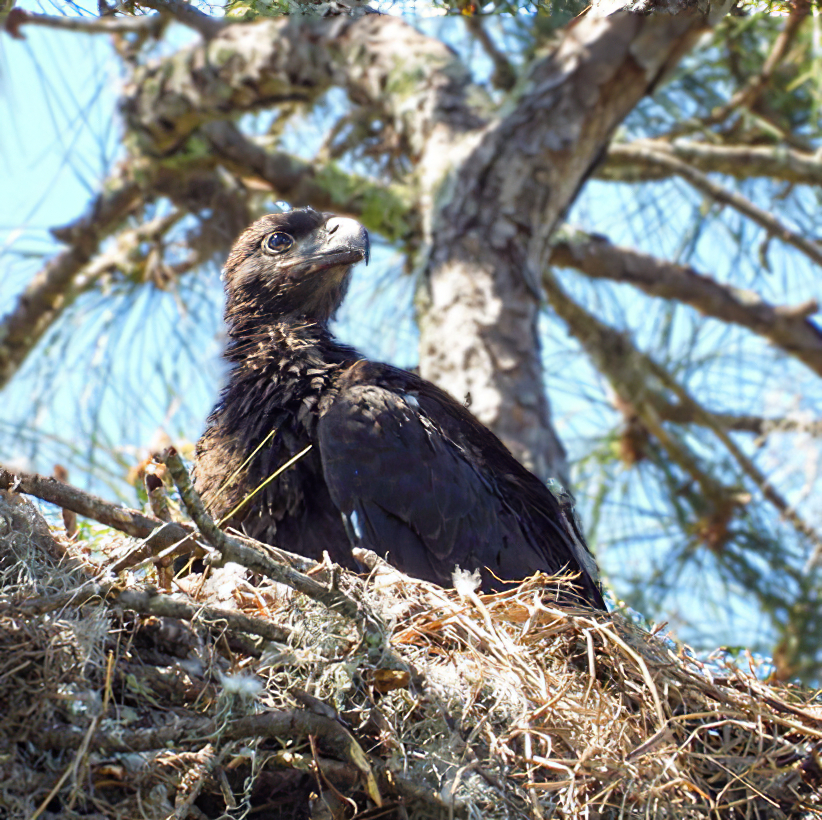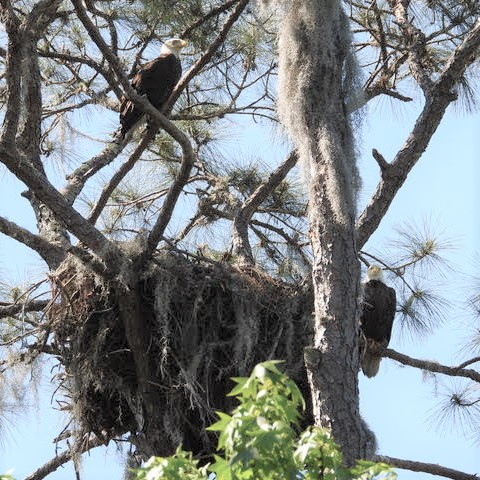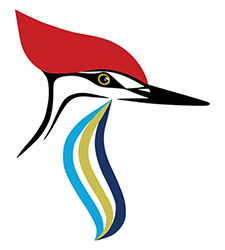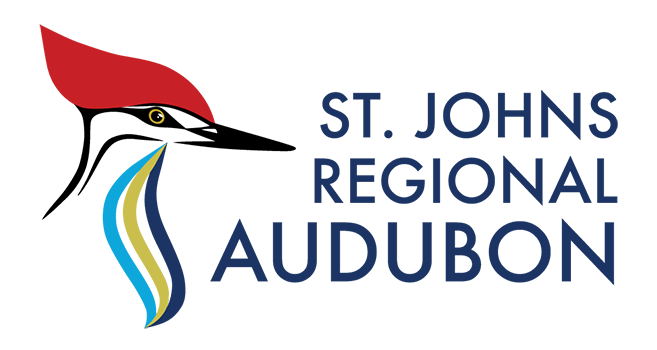
Help Us Look for New Nests
Hurricane Irma knocked down approximately a quarter of the Audubon-monitored nests in Florida. In addition, Bald Eagles move nests for various reasons – too much development near old nest sites, competition for nests from Great Horned Owls, etc, so we need help keeping track of new eagle nests.
If you see a new nest in your neighborhood, please contact Amy Koch at president@stjohnsaudubon.com.
We are also looking for volunteers – who may not be able to monitor nests on a regular basis – but are willing to help us find and document new nests in St. Johns and Putnam Counties. Please contact Amy if you can help.
More EagleWatchers Needed!
EagleWatch season runs from October to May each year.
St. Johns Regional Audubon members and friends actively participate in EagleWatch, and we are looking for more volunteers. Currently, we have over 20 volunteers watching nests in St. Johns and Putnam Counties, but there are many nest sites that are not being monitored in these counties.
If you are interesting in becoming an EagleWatch volunteer, please go to the attached link:
http://www.eaglewatchflorida.org/signup.html —or — contact Amy Koch at president@stjohnsaudubon.com

The EagleWatch Program
Based at Audubon Center for Birds of Prey, Audubon EagleWatch seeks information about Bald Eagles, active nest locations and possible disturbances or threats to nesting activities. As one of the premier community science programs in Florida, EagleWatch works to protect approximately 40% of the state’s nesting pairs.
Florida has one of the highest density of breeding Bald Eagles in the lower 48 states, only surpassed by Minnesota and Alaska. Although they were removed from the federal list of Threatened and Endangered Species in 2007, Bald eagles are still protected by both state and federal laws.
Their current threats include habitat and nest destruction, collision with vehicles, and territorial fights. With continuing land development, many eagles are choosing to nest on man-made structures such as power line and communication towers. These non-natural nest sites can introduce many hazards to the young eaglets when they fledge.
Here are the objectives of the EagleWatch program:
- Compile data for publication documenting urban nesting activity.
- Emphasize monitoring of urban pairs to record long-term nesting trends.
- Identify potential threats to nesting success related directly or indirectly to human activity.
- Expand Audubon EagleWatch on a statewide basis while generating increased public awareness of our national symbol.
- Educate the community about Bald Eagles and their current threats.
- Assist with the rescue and transport of downed eagles due to accidents or as a result of storms.
For more information on this important program, go to https://cbop.audubon.org/conservation/about-eaglewatch-program

